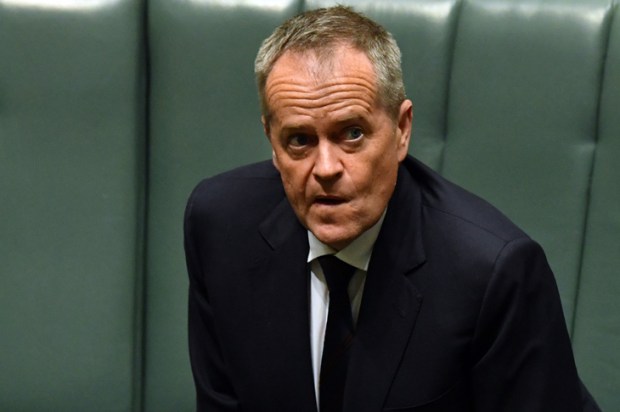How many examples exist of successful economic development resulting mainly from foreign aid? What brought this heretical thought to mind is the growing unevenness in economic fortunes of the three-dozen Indian states and territories. My home state of Bihar is still trapped in a different century on almost all health, education and economic indicators. Against the national GDP/capita of US$2,100 in 2019, Bihar’s was $659, the lowest in the country. Fourteen states had GDP/capita above $3,000. Foreign aid can no more explain failures by some than success by other states. Hundreds of millions have been lifted out of poverty in Asia more broadly by sound economic policies than as a result of foreign aid. Limited government, low corruption, property rights, the rule of law and free markets are the essential props of poverty-reducing economic growth.
Foreign aid is contested as an instrument of development policy. Does it facilitate economic growth, institutional resilience and good governance; or foster international welfare dependency, give recipient governments an alibi for their shortcomings and assuage donor countries’ consciences for entrenched barriers to trade and labour from developing countries? The international benchmark for official development assistance (ODA) remains 0.7 per cent of GDP but the combined rich countries’ average is only 0.33 per cent. Leaving aside the wisdom of focusing on the input side rather than results, the more fundamental question is: on balance, has ‘development’ aid proven pernicious or beneficial – have the good intentions on aid translated into effective policies for development? Advocates argue that ODA will help the world’s one billion poorest people caught in a poverty trap reach the first rung on the ladder of economic development. It’s an investment in global economic growth that will benefit all nations, not a handout. Critics contend that successful poverty reduction programs are better achieved through indigenous, ground-level planning, not well-intentioned but policy-distorting ODA that can sometimes worsen the plight of poor economies.
Instead of aid, foreign investment, new bond markets, microfinancing and revised property laws would produce better returns. While there is an essential role for governments as the provider of indispensable public goods like law and order, the private sector is more efficient at being the main motor of economic activity to generate growth and prosperity. Governments should facilitate business start-ups, expansion and profitability. Investment will not flow into environments of poor infrastructure, inadequate and inefficient services, stringent controls on capital entry and exit, labour market rigidity, punitive tax regimes, lack of law and order, weak or unenforceable property rights, no security of profit margins, etc. This is why capital and industry (and the industrious labourers) have fled from the Indian state of Bihar to greener pastures in other states.
This is not to question emergency humanitarian and disaster relief operations, although these too can have perverse consequences. For example, food delivery, arriving weeks and months after the worst of a famine, depresses food prices to such an extent that local farmers fail to make any profit for their produce and do not sow crops for the following year. Nor do I question ‘aid for trade’, where aid is offered to developing countries to help cushion the adverse impact of their economies being opened to international trade and competition. Nor, finally, do I question limited project aid, such as for eradicating a particular disease or helping with a new crop.
Rather, I question aid as a foreign policy tool for promoting development and ending poverty. The theory is that aid fills the gap in capital needed for investment in growth-promoting activity and infrastructure. The reality often is that aid is the transfer of money from middle-class taxpayers in rich countries to the rich elite in poor countries. Meant to put the poor on the first step of the ladder of opportunity, aid money is instead captured by the upper and middle classes. For decades, aid has been harmful in crowding out private-sector investments and enabling despots to continue with poverty-perpetuating policies. Some analysts have found an inverse correlation between aid and growth in Africa and South Asia. For example, over $2 billion in foreign aid to improve Tanzania’s roads failed in that goal but did bloat its bureaucracy with the government having to produce 2,400 reports for the 1,000 donor missions. The massive infusion of foreign aid in the past to Pakistan enabled it to escape the choice between guns and butter. Aid corrupts and corrodes. Much of the money disappears into the pockets of the well-connected. And it corrodes by lessening the requirement for a government to forge a bond with its citizens by raising revenue and redistributing those funds as services. Such a social contract is fundamental to any country’s emergence as a robust democracy that provides for its people.
Often, ‘aid’ reflects the geopolitical and commercial interests of donors not recipients; is a disguised subsidy to donor countries’ uncompetitive products; gives cover to donor countries for production and trade policies (subsidies, tariffs, quotas, labour market restrictions) that impose significant harm on developing countries; and provides an alibi for many developing countries’ self-inflicted failures. As a corollary, for over a decade remittances (money or goods sent back to origin countries by migrants), with markedly less leakage and theft, have been three times the volume of ODA to low- and middle-income countries, totalling US$626 billion in 2022 compared to around $190bn in ODA. India ($83.1bn), China ($59.5bn) and Mexico ($42.9bn) are the world’s top recipients of remittances. Freeing up the global labour market would be far more beneficial to developing countries than much of so-called development aid. Developed countries have rigged the trade rules in their favour, been the main beneficiaries of existing trade regimes and eased their conscience through foreign aid. On the one hand they dole out billions in aid, but on the other they provide massive agricultural subsidies to their own farmers. They could end development aid but cut subsidies to their own uncompetitive farmers and manufacturers and open up their markets to manufactured goods and agricultural produce from developing countries so that free trade becomes the engine of growth. Thus the poor stay poor and earn the ire and contempt of politicians and citizens alike in the rich countries, while uncompetitive but well-connected businesses and middlemen consultants laugh all the way to the bank. Like Marxists who insisted that the Soviet Union was a distortion not a negation of the ideology, aid theologians insist that its voluminous failures reflect faulty implementation, not a fundamentally flawed policy.
Got something to add? Join the discussion and comment below.
Get 10 issues for just $10
Subscribe to The Spectator Australia today for the next 10 magazine issues, plus full online access, for just $10.
You might disagree with half of it, but you’ll enjoy reading all of it. Try your first month for free, then just $2 a week for the remainder of your first year.














Comments
Don't miss out
Join the conversation with other Spectator Australia readers. Subscribe to leave a comment.
SUBSCRIBEAlready a subscriber? Log in